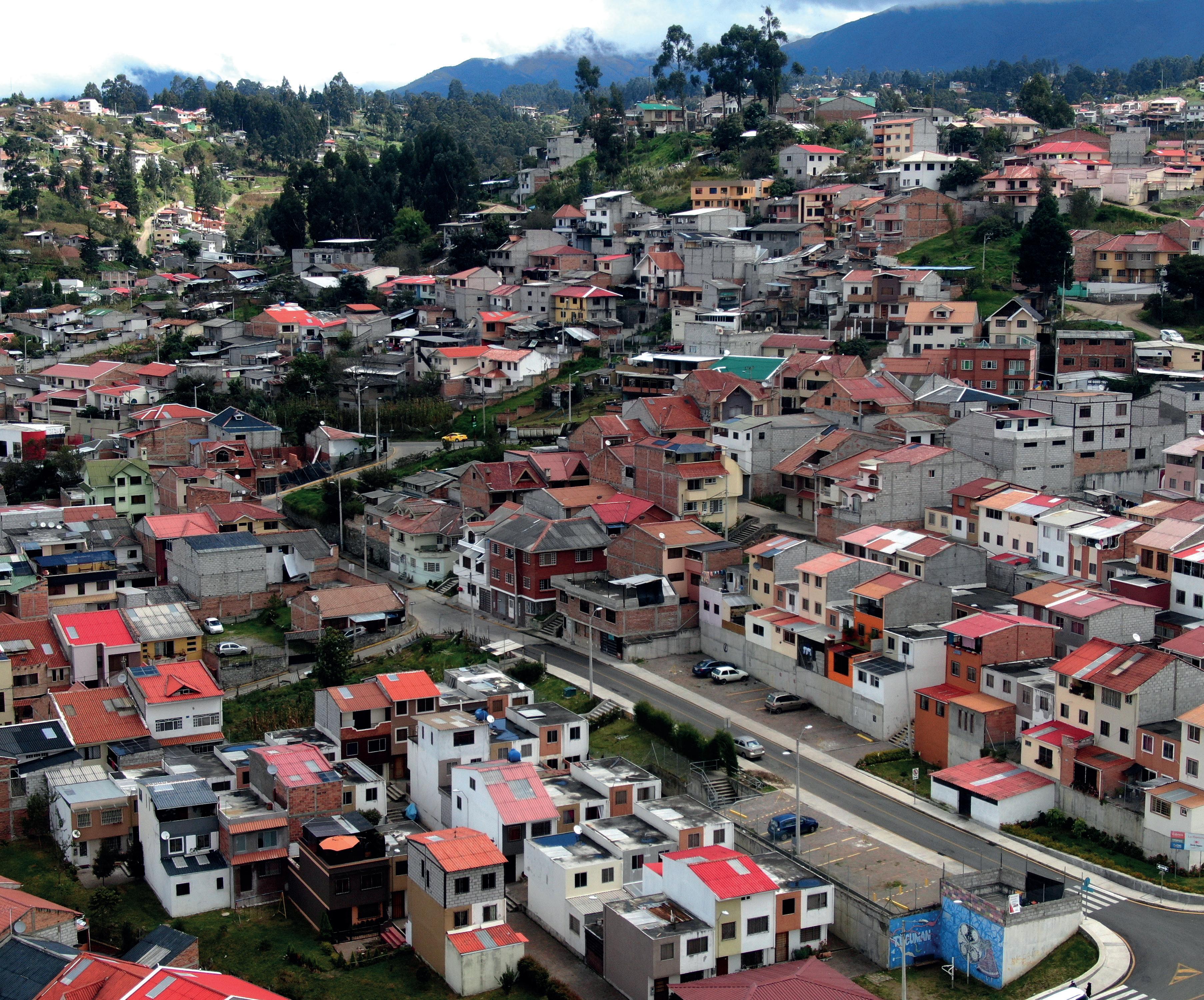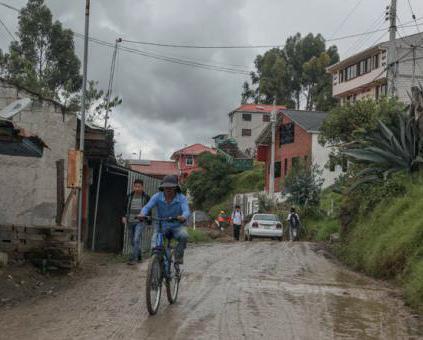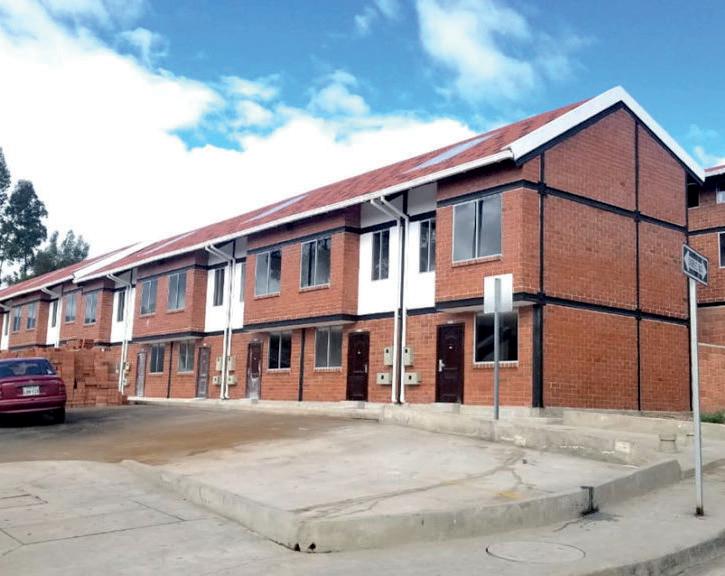
4 minute read
1.2 Social Housing in Cuenca: Current state and Issues
Figure 1.5. Social Housing Projects location and their proximities to rural centralities. By author
Cuenca
Advertisement
Rural parishes
Rural centralities
SOCIAL HOUSING PROJECTS IN CUENCA Name of the Project Year # Housing Units
Ciudadela Católica 1973 360 Paraíso 1982 600 JNV-MIDUVI Retamas Tomebamba Huayna-Cápac Bosque de Monay Eucaliptos 1984 1984 1985 1986 1987 503 320 45 433 255 Patamarca 1989 1224 Tarqui 1994 117
Sub Total 3857
Los Cerezos 2004 75 Los Alisos 2005 14 Los Nogales 2005 190 Huizhil 2009 118 Jardines del Valle 2010 26 EMUVI-EP Bemaní Capulispamba Rieles de Monay Centro Histórico 2011 2013 2012-2014 2013 1128 41 550 13 La Campiña 2013 150 Miraflores 2014 200 Casa del Sombrero 2015 15 Los Capulíes 2019 593
Sub Total 3113
Multifamiliares del IESS 1979 119 IESS Vista al Río (BIESS-EMUVI) 2014 550
Sub Total 669 TOTAL 7639
Table 1.1. Social Housing Projects in Cuenca. By author based on: Culcay and Maldonado, 2016; Padrón and Tello, 2016. Manchester School of Architecture | Andrea Estefanía Calle Bustamante
GSPublisherVersion 0.0.100.100
Figure 1.6. Azuay Province with its rural parishes and their centralities. By author Social housing projects have been developed by local government’s management through public institutions, these have changed names throughout the years but the logistics have not. Until last year (Table 1.1), around 7600 housing units have been built and their location is primarily on areas that are near the rural centralities, meaning that they are closer to the urban limit of the city (Figure 1.5 and 1.6.)(Culcay and Maldonado, 2016, Padrón and Tello, 2016). This operation, of housing demand and the government’s supply on the city limits, happens due the land extension that a development as a social housing project needs and also because land price is cheaper the further it is from the city. On the other hand, residents that want to acquire a plot of land or a house are subdued to the uncontrolled prices, making it impossible to obtain their own place of living (KJC, 2016). This, plus the disorganized control of the urban growth, makes the city grow horizontally with projects that lack basic necessities and demand transportation. Housing projects, that are located near rural parishes, represent a short term expense to the local municipality (Castillo, 2019). Additionally, mobility issues result in more vehicle focused infrastructure, without concentrating on how these housing projects represent small parts of the city and they should be refurbished or re-imagined. According to the World Bank, two out of three Latin-American families need a better house, not a new one. Their article points that a poor quality house in Latin-America can be recognized if it’s analyzed by its structure, access to basic services, quality of tenancy and the location; and they mention that in the region, the incredible problems that come with natural disasters, such as 15

Photo 1.3. Miraflores Neighborhood showing partially the Social Housing Project with the same name (Bottom right). By author
Photo 1.4. Neighorhoods that are farther away have dirt roads. Source: Xavier Caivinagua for El Comercio, 2019


Photo 1.5. “Los Capulíes” Social housing project. Source: El Mercurio, 2019
reconstruction, represent from 4 to 10 times the cost of preventing them. The World Bank also explains how Colombia, instead of directing money to create new housing projects, decided to focus on housing policies that would be more efficient, resilient and effective. In one of their policies, they developed programs to improve the living conditions of social housing (Mundial, 2019). Demonstrating that such policies are necessary to its context, and in the case of Cuenca, it can improve the way the city grows without designating resources for new projects that would only bring future problems and expenses (Mercurio, 2019). Nowadays Cuenca’s housing programs are directed towards building new developments (Photo 1.5). Therefore it is important to start making refurbishments to existent projects, in order to learn the possibilities provided by these type of developments, hopefully changing the way social housing is conceived and noticing future opportunities of growth.
2

Miraflores Project, 2012
[Case Study + Analysis + Strategies]
Miraflores is the name of a social housing project located in the neighborhood of the same name. It was built in the period 2012-2013, and provides housing for 182 families with low-income backgrounds. Miraflores is divided into 3 blocks: Matías Ochoa, La Floresta, and Tucumán. In the first block, families that suffered their loss of homes due the winter season were given housing units. The remaining residents needed to comply with the mandatory paperwork additionally to loans and credits that proved that they could buy a unit in Miraflores.
In this chapter, work from studio B is shown. Where the methodology, methods and site analysis was executed, finalizing with a draft of the masterplan, showing the strategies that are proposed in the same chapter.










